Stories
Brian Molyneux
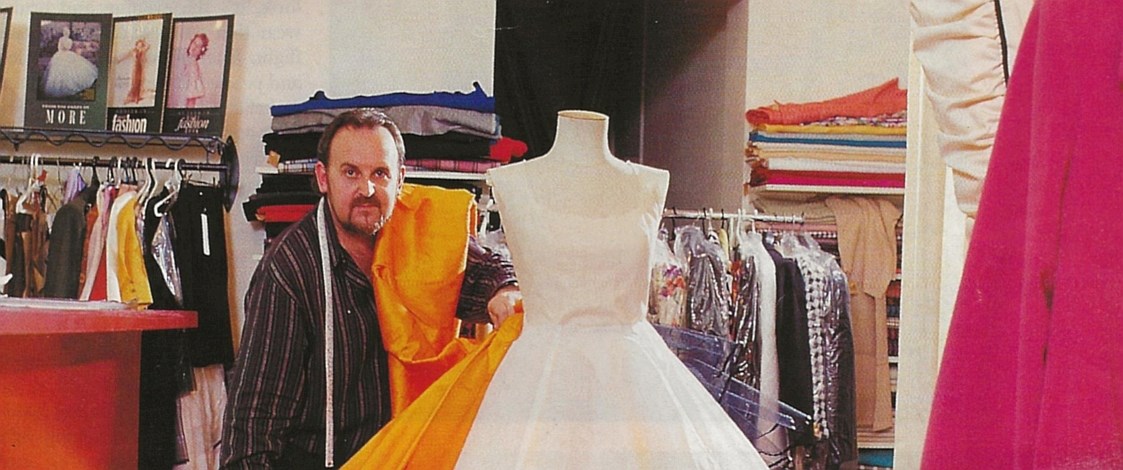
Brian Molyneux’s fashion designs always begin with a detailed sketch. A talented fashion artist as well as a designer, his original intention when he left school in Preston, Lancashire in the late 1960s was to be an art teacher.
With this goal in mind, he enrolled in a Graphics, Fine Arts and Fashion course at Harris Art College (later Lancashire Polytechnic, now the University of Lancashire). Guided by his tutors, who were impressed by his 'good use of fabrics and imaginative use of decoration', he decided on a fashion career instead. His design sheets for his final year assignment (iconic British designer Jean Muir was one of the external assessors) testify to his creative skills.
Design sheets for final year assignment, Harris Art College, Liverpool, 1960s.
After graduating top of his class, Brian took samples of his work to London and found employment with Dandelion Limited, a wholesale fashion company supplying trendy boutiques such as Miss Selfridge, Dorothy Perkins and Top Shop. Top Shop bought the bulk of his first collection, funky coats and jackets in German fake fur, one of which subsequently featured in British Vogue.
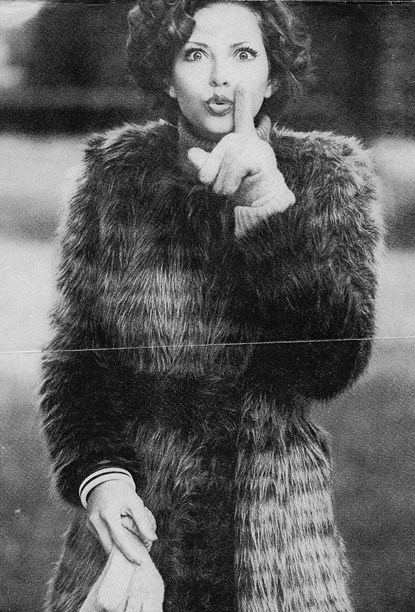
Top Shop fake fur coat designed by Brian Molyneux for Dandelion Ltd, British Vogue, 1970s.
Brian returned to the north of England in the 1970s and, for six years, designed a young fashion range for a manufacturer of mail-order clothing. In 1980, he emigrated to Auckland. His first job was with Classic Fashions, his second with Thornton Hall where he doubled as a member of the design team and illustrator of Hullabaloo’s fashion ads.
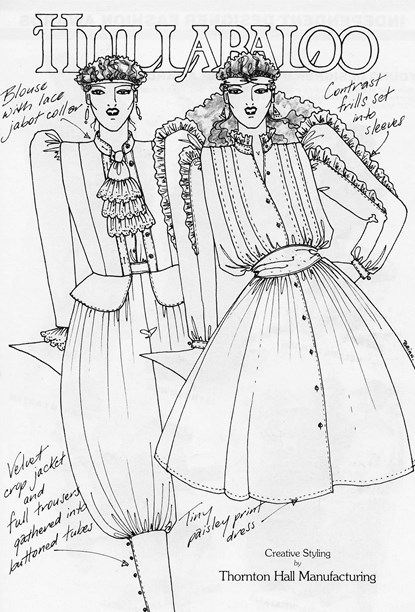
Hullabaloo advertisement, 1982.
A collaboration with fabric artist Louisa Simon – he designed and made the clothes, she hand-painted the fabric – for Durham Arts and Crafts, led to Brian’s 38-year relationship with the shop’s owner Arthur Ferguson. In 1986, with Arthur as his partner, he started his own couture label – Molyneux – and opened a shop in central Auckland. The business moved several times before finally locating to premises previously occupied by Megan Douglas (Obscure Desire) on the corner of Victoria and Albert Streets where it remained until 1999.
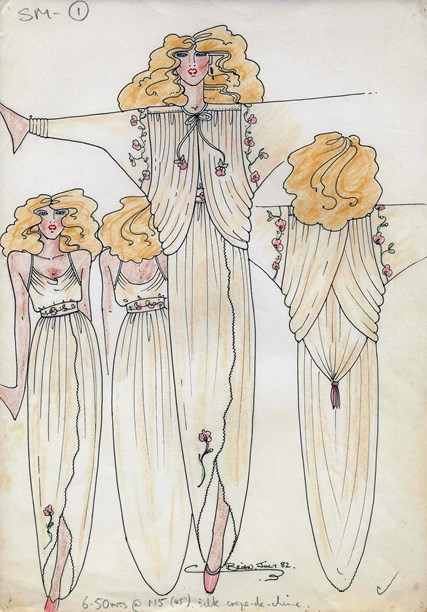
Brian Molyneux and Louisa Simon design for Durham Arts and Crafts, early 1980s.
Brian describes his core business as corporate made-to-measure. Businesswomen and others for whom good design, good fabric and quality construction were a priority, formed his clientele. Known for his meticulous tailoring, he admits to being influenced by the strong lines of the 1940s. Not that he did straight copies. "It was about taking the essence of the designs,” he says, “and making them relevant for today." He used toiles for all his designer pieces and never made the same garment twice in the same fabric.
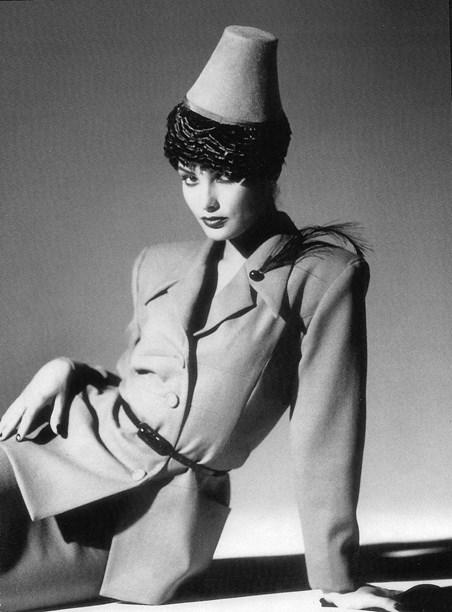
1940s-inspired wool crepe tailored suit, 1995.
Brian also specialised in spectacular cocktail, evening and bridalwear. For one of his brides, he designed a lace chiffon top and silk satin palazzo pants, appropriate attire for her wedding on the luxurious Art Deco Orient Express.

Molyneux wedding gown photographed by Kevin Armstrong.
There was often an element of surprise in Brian’s creations. A dark jacket might open to reveal a bright lining. Worn over a matching long skirt, a short cocktail dress could be transformed into an evening gown. He liked using fabrics that were not synonymous with a particular garment. Side-stepping the customary denim, he cut jeans in white satin or flowery cotton prints and made jackets or coats to match.
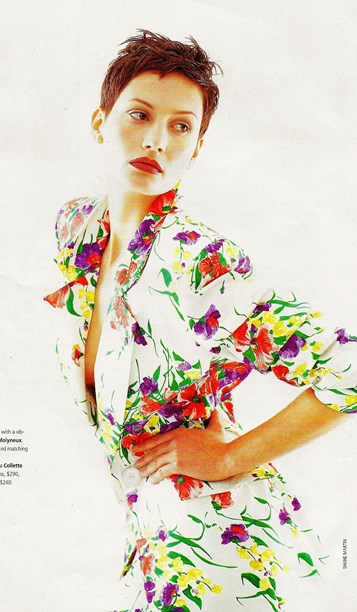
Floral print jacket and matching jeans, Fashion Quarterly Spring 1995.
Brian designed a small Molyneux collection each season, staged an annual fashion show of 40 one-off garments at the Carlton Hotel and also participated in many charity fashion events, the Corbans (later Wella) Fashion Collections and the Benson & Hedges Fashion Design Awards.
He recalls his involvement with Clothes Encounters, a designer shopping tour service for visitors to Auckland, as very helpful. "Being a bit off the beaten track, it meant more people, particularly overseas tourists, would find us."
When fashion editors came calling with requests to create something special for a themed photo shoot, Brian happily obliged. As a consequence, his clothes featured regularly in the major fashion magazines. He enjoyed a similarly good working relationship with the newspapers who duly reported on his seasonal collections.
Magazine showcard.
Having television presenters such as Judy Bailey, Angela D’Audney and Carol Hirschfeld wear his clothes on and off the screen, helped Brian raise his label’s profile. And when Rena Owen, the first New Zealand actress to walk the red carpet at the Cannes Film Festival (1998), appeared in a gold Fortuny-pleated Molyneux gown, the name resonated with an even wider audience.
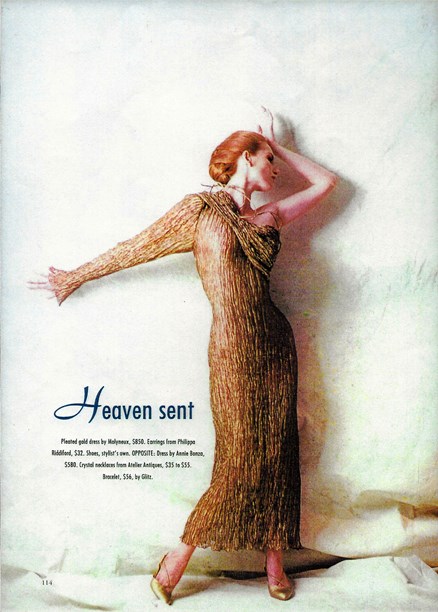
Angela Dunn models the gold dress worn by Rena Owen at the Cannes Film Festival, 1998.
Throughout the 1980s and 1990s, Fashions in the Field competitions generated a demand for sophisticated racewear. Besides making-to-order for his own clients, Brian designed and made garments commissioned by the general manager of Carlton United Breweries, Richard Holden, who supplied the fabrics. These were entered in the competition at the Melbourne Cup in Australia and won five times.
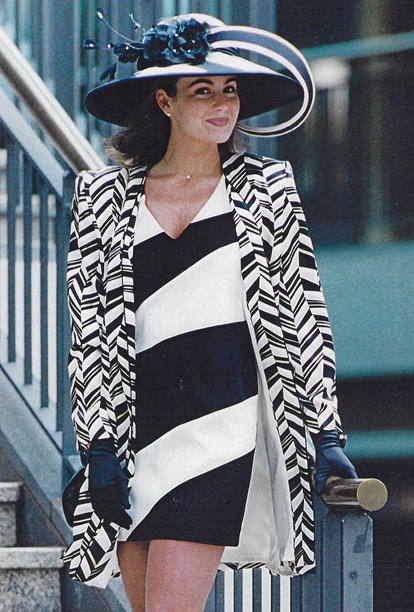
Race-day ensemble.
In 1999, due to Arthur’s failing health, Brian and Arthur relocated to Woodbury, a tiny settlement outside Geraldine in South Canterbury. Brian continued to work as a designer, retaining his association with many of his Auckland clients and building up a South Island clientele.
For 11 years, starting in 2001, he commuted to Timaru where he taught fashion drawing, fashion history, tailoring and embellishment at the Aoraki Polytechnic. He says he found it very rewarding to pass on his knowledge to young people. He encouraged his students to enter the Hokonui Fashion and Design Awards, where several won prizes over the years, and he also gave talks on fashion topics at the local high schools.
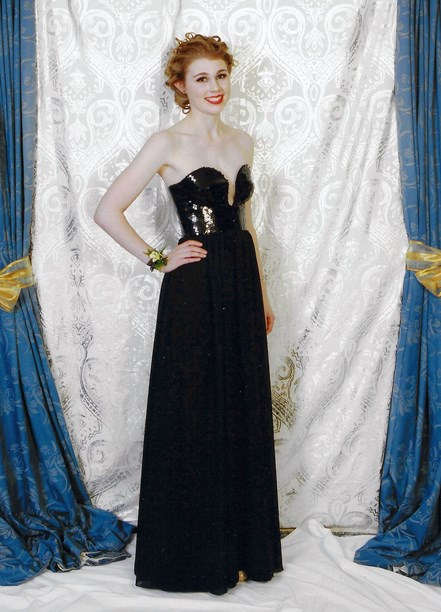
Laura Bishell in the evening dress Brian Molyneux designed for her to wear to the Craighead Diocesan school-leavers ball in Timaru.
A great believer in recycling, Brian has been collecting old denim jeans and remaking them, when time allows, into couture garments. Eventually, he hopes to do an entire denim collection that includes day and eveningwear. "Even though the denim is old, I don’t treat it as something that has been discarded, but as something special. The jackets have shoulder pads, interfacing and lining, just like any other tailored jacket." Pockets, waistbands and belt loops are utilised as trims on the new garments and different shades of denim are often brought together in the one piece.
Appliqued denim jacket made from two shades of recycled denim. The sleeves are the legs of the former jeans and marks left by pegging the jeans on the clothes-line are visible on the front. 2012.
Brian Molyneux never stops drawing. When one sketchbook fills up, he starts another. His sketchbooks, dating back to the 1970s, contain not just fashion drawings but thoughts, comments, fabric samples and lyrics from songs. He says it’s immaterial whether or not a garment eventuates from a sketch. "Whenever I get an idea I’m compelled to put it down on paper."
Text by Cecilie Geary. Banner image of Brian Molyneux in his Auckland studio, 1990s.
Published December 2019.